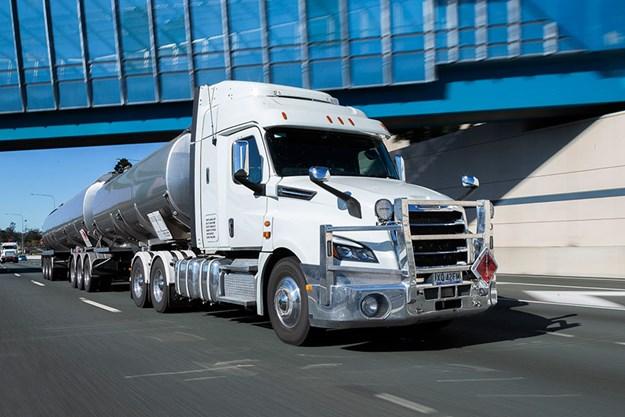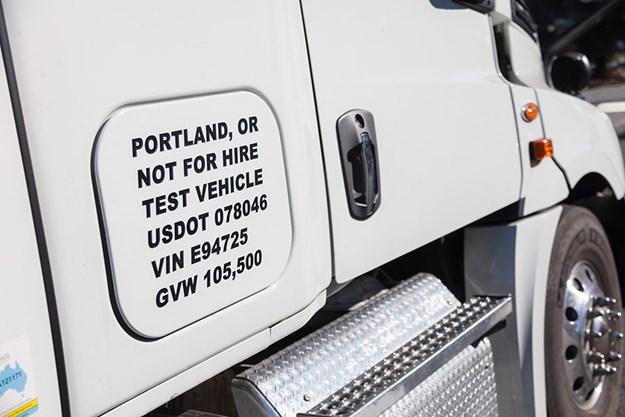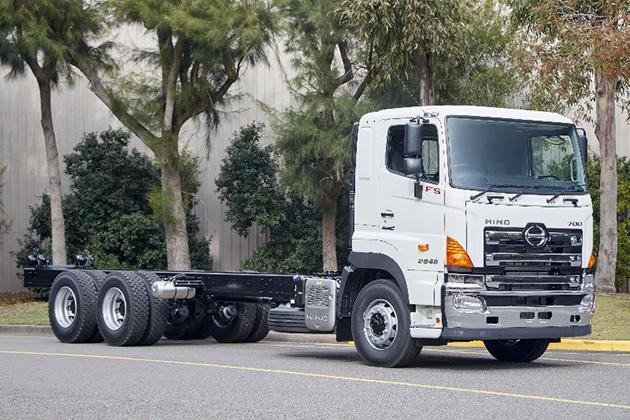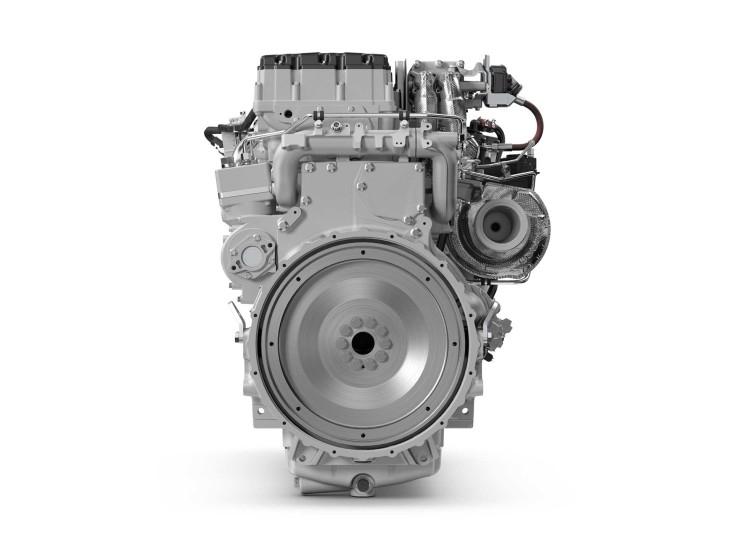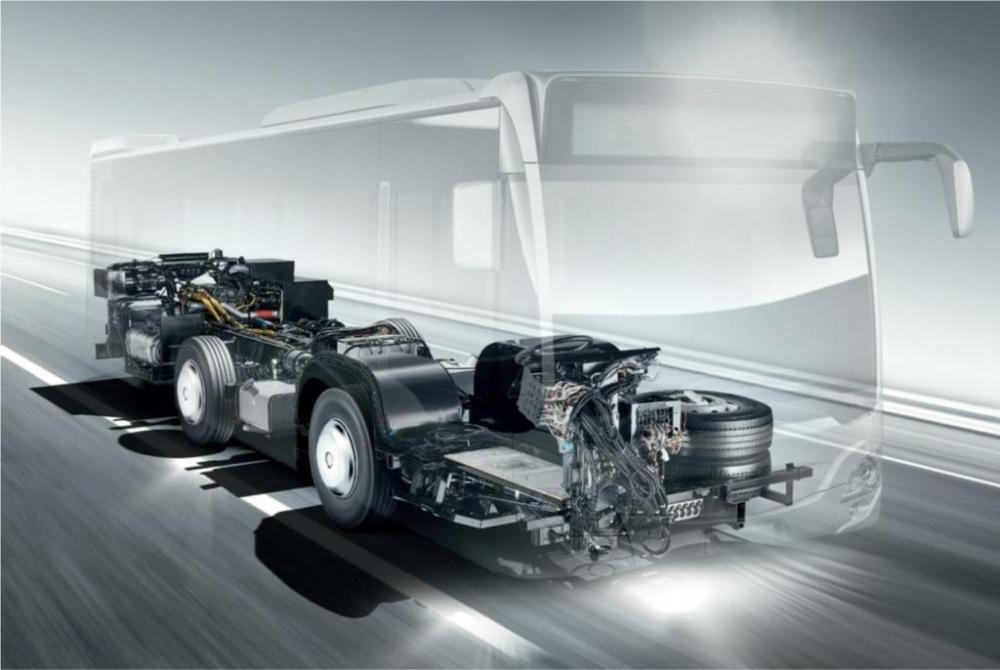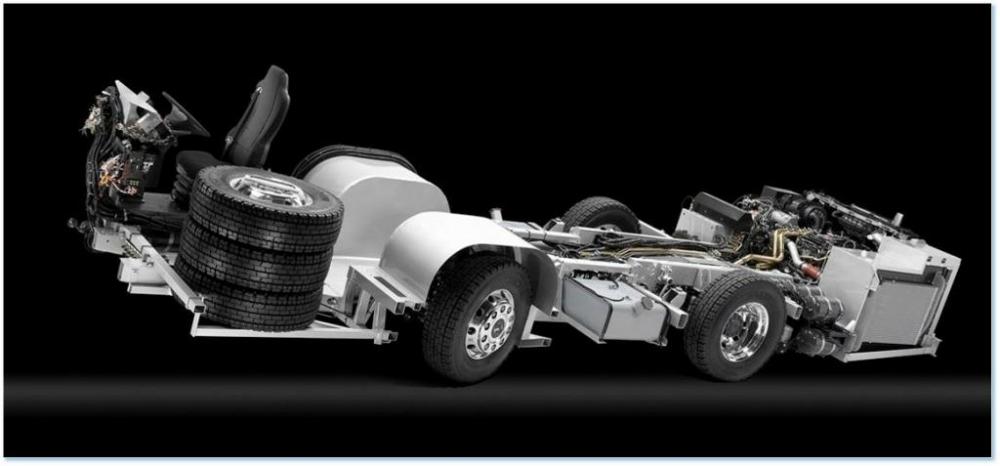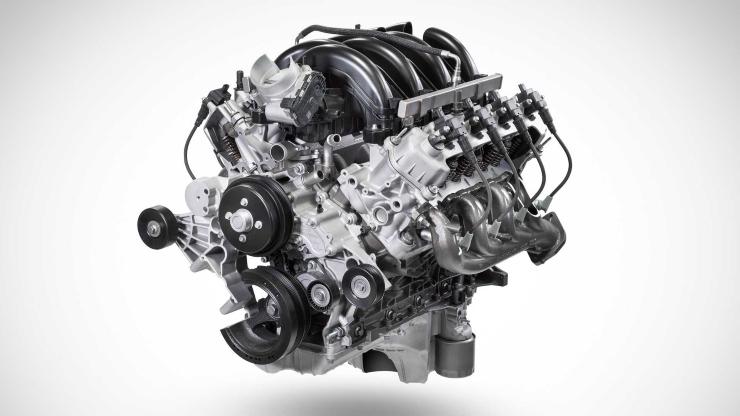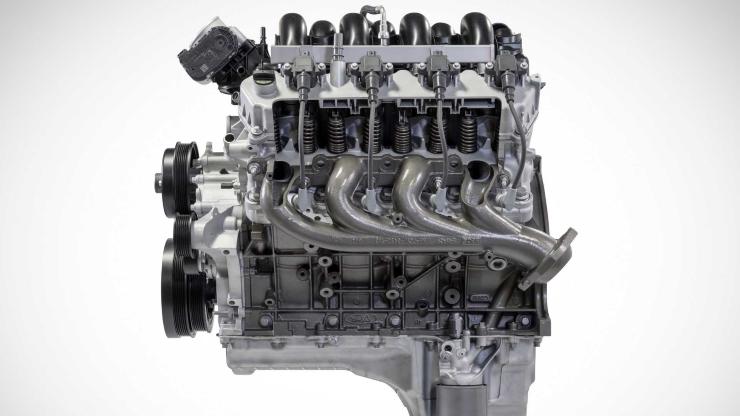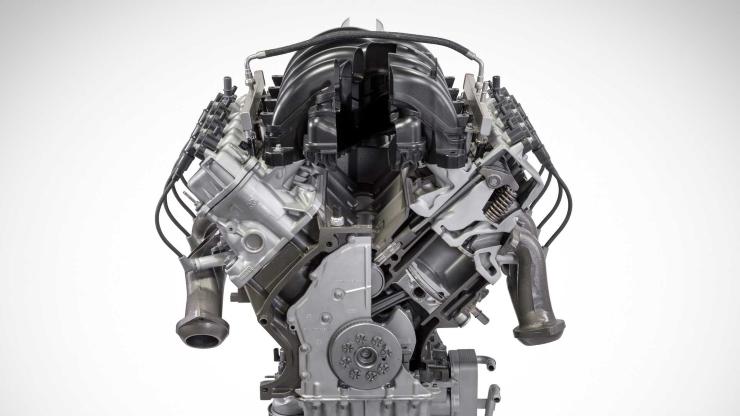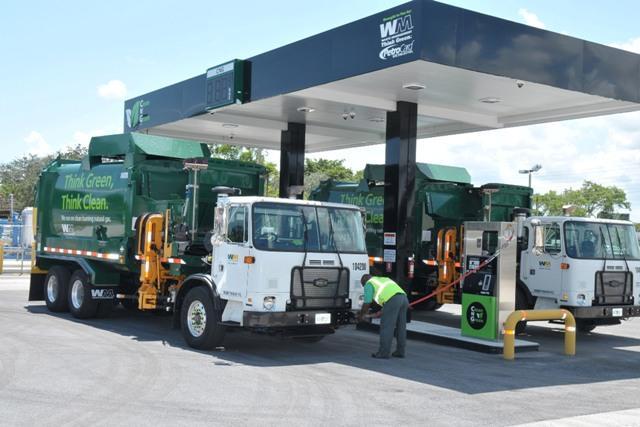
kscarbel2
Moderator-
Posts
18,544 -
Joined
-
Days Won
112
Content Type
Profiles
Forums
Gallery
Events
Blogs
BMT Wiki
Collections
Store
Everything posted by kscarbel2
-
Cascadia trial on track Steve Brooks. Owner-Driver / August 3, 2019 A right-hand drive Freightliner Cascadia has been quietly undergoing extensive testing in a Queensland operator’s fleet, prior to its official Australian launch. It was an opportunity too good to miss and the timing simply could not have been better: a stint aboard the first right-hand drive Freightliner Cascadia test truck in the country, just days before heading to the United States for a detailed look at the testing and development work being done in preparation for the model’s Australian launch later this year. A Cascadia 126 model, the right-hooker has been operating in the fuel haulage fleet of Toowoomba-based Maktrans since February this year and with almost 72,000km under its belt, has done everything expected of it, according to company owner Rob Hannaman. Maktrans runs nine trucks with Freightliner Coronado punched by Detroit’s DD15, being Rob’s established combination for the 25 metre B-double applications that dominate the business, hauling fuel across a broad expanse of Queensland and NSW. The only exceptions are a recently purchased Mercedes-Benz 2663 model for a new A-double configuration and, of course, the Cascadia test unit punched by a Detroit DD16 dispensing 600hp (447kW) and a tenacious 2,050ft-lb (2,779Nm) of torque. Joining two left-hand drive test units operating from Victoria, the Maktrans Cascadia is effectively a hand-built pre-production unit brought to Australia to continue the test program that Freightliner is banking on to verify and secure Cascadia’s durability for the Australian market. According to senior Freightliner insiders, several more right-hand drive trial units are soon to join the local test program, which is being run in sync with an extensive engineering and test exercise in the US. The extent of that exercise and its aim to ensure Cascadia does not suffer the durability dilemmas of some predecessors, is the fundamental reason behind Freightliner’s invitation to visit the US operation. Meantime, the Maktrans truck is the same unit showcased on the Freightliner stand at this year’s Brisbane Truck Show, obviously with the ‘camouflage’ now removed. It is also the first Cascadia in Australia to sport a sleeper cab – the shorter 36 inch version which will be offered along with 48 inch and 60 inch bunks. Critically, driver reaction to the Cascadia has been highly positive with Maktrans driver Trevor Conroy quick to concede he’d be more than happy to stay in the trial truck for as long as possible. "It’s a good thing," said the straight-talking 62 year-old during a run from Brisbane to the top of Cunningham’s Gap on his way to deliver a B-double load of diesel to a roadhouse in northern NSW. "As far as I’m concerned, it’s a better truck all-round than Coronado." Why? "It’s more comfortable, quieter, a lot better visibility," Trevor says simply. "There are just a lot of things about it I like, including the automated ’box. It’s just so good everywhere, and easier, especially in traffic." As for handling and road manners, he contends the steering is certainly firmer at low speeds than its Coronado equivalent, "But you couldn’t say the steering’s heavy. Not at all, and it keeps a good line on the road." Just an hour or so after leaving Brisbane, ride quality and road manners were certainly showcased on the rippled, rutted surface of the Cunningham Highway where the Cascadia delivered exceptionally high standards. It was on this stretch, however, where Cascadia displayed a surprising and totally unexpected quality totally at odds with most of its predecessors. Despite the fact the truck had shortcomings in some areas of fit and finish, typical of any pre-production unit, there was not one – I emphasise, not one – rattle, squeak or squawk from the moment I climbed in to the time I climbed out at Fisher’s roadhouse at the top of Cunningham’s Gap. A smiling Trevor Conroy agreed. "Yeah, there are no noises that shouldn’t be there." Cynical as it may sound, this was an amazing feat for a brand often pilloried for poor attention to detail, suggesting that the Cascadia cab has inherited a level of Benz architectural strength which largely eluded its forebears. Except, of course, for the original and much revered FLC112 model which also happened to have a cab derived from Mercedes-Benz. Road Report One of the truck’s two regular drivers, Trevor spends four days behind the wheel before handing over to John Malpress for the remaining three days of the week. While acknowledging that most drivers have their own ideas and individual preferences on what’s good and what’s not, Trevor is a big fan of the standard seat. "I’m not a tall bloke and my back’s not real good at the best of times but this is probably the most comfortable truck seat I’ve ever sat in." What about the bunk? "It’s alright for me and it’d probably be fine if you were the truck’s only driver but for our work, a bigger bunk would be better, for sure. It’d make life easier." Quiet for a moment, he adds abruptly, "The worst thing about it is the mattress. Bloody Yank mattresses are crap." Fortunately, Freightliner in Australia uses a far better mattress. Any other issues? Again, he takes a few moments before stating that apart from some initial delays with wiring for Dangerous Goods compliance, the truck has been largely trouble-free. "We’ve just been told to put mileage on it and that’s exactly what we’ve been doing, except when it got taken off the road for the truck show," he remarks. Asked if he’s noticed a difference in fuel consumption between the 600hp DD16 in the Cascadia and the 560hp (418kW) DD15 in the Coronado he normally drives, both units hauling largely identical B-double tanker sets at loaded weights up to 68 tonnes, an adamant Trevor Conroy insists, "A big difference. This truck (Cascadia) is heaps better on fuel." He quickly scans through the test truck’s on-board monitoring system to reveal an average consumption of 51.4 litres per 100km, or 1.95km/litre, recorded over the previous 3,500km. Much of Cascadia’s instrumentation, switchgear and control functions are from the same family store as the latest Mercedes-Benz models and Trevor concedes it took "a little while" to come to grips with the various functions but now, "it’s not a problem". Time and distance passed quickly and it wasn’t long before Aratula fell behind and the long Cunningham’s climb started to rear up. As he usually does, Trevor simply set cruise control and let the DT12 automated shifter do its thing for most of the climb until, with just a kilometre or so to go, he switched to manual mode in preparation for a shift down to fifth on the approach to the sharp lip at the top. In an incredibly strong pulling performance, the DD16 revealed the deep reserves of grit and grunt you’d expect from a big bore engine with such formidable torque output, hauling easily over the lip in fifth gear at 20km/h and Trevor reporting, "My right foot’s not even flat to the floor." It was, however, the synergy and intuition of the engine and transmission package that truly impressed, with the DT12 in auto mode demonstrating an advanced ability to let engine speed to run to the higher end of the rev range on steep sections rather than regularly jumping to an unnecessary and unwanted upshift. All up, it’s impossible to judge the long-term suitability of any truck from just a hundred kilometres or so in the shotgun seat. But this much is indeed evident: Freightliner Cascadia is demonstrating the attributes to suggest America’s number one brand of heavy-duty truck will later this year cross the Pacific with far more in its favour than any of its forebears. Stay tuned, because our next report on Cascadia will also be from the other side of the Pacific. .
-
Prime Mover Magazine / August 1, 2019 Commercial vehicle manufacturer Hino Australia has expanded its heavy-duty 700 Series range with the addition of a long-wheelbase variant of the FS 2848 6x4 model. The new long-wheelbase model is powered by Hino’s E13C 12.9 litre six-cylinder turbo-charged diesel engine, which produces 480hp (353kW) of power and 2157 Nm (1591lbft) of torque. Compliant with ADR80/03 (Euro 5) emissions standards, thanks to a combination of exhaust gas recirculation (EGR) and selective catalytic reduction (SCR) systems, the E13C engine is matched to the latest generation ZF 16-speed automated manual transmission (AMT), the TraXon 2441TO. “We have developed this truck at the specific request of our customers – it is suitable for any number of applications from general farm duties or cattle trucks to a 14-pallet rigid freight truck or a flat tray with a rear-mounted crane,” said Hino Australia’s Manager of Product Strategy, Daniel Petrovski. “It features the overdrive version of the TraXon transmission and includes the standard fitment of the ZF Intarder, providing up to 3200Nm of auxiliary braking.” Named the FS 2848 AMT AIR 6267, the new variant rides on a combination of long taper-leaf suspension on the steer axle and Hendrickson HAS 460 air suspension on the drive axles. “The cab on the FS is mounted to the grid hole chassis via the Hino four-point cab air suspension with the driver seated in an ISRI 6860/870 air suspended seat with multiple air comfort adjustments and integrated seatbelt,” said Petrovski. “Adding to the truck’s appeal is the all-new Hino smart Multimedia System, which includes standard reversing camera, and an unprecedented level of vehicle connectivity and entertainment possibilities.” The Android-based 6.5’’ capacitive multi-touch digital screen features AM/FM/DAB+ digital radio, Wi-Fi connectivity, and the latest version of Bluetooth tethering which enables enhanced call handling, and improved speech to text functionality. Other features include a curated Hino application store and an optional truck-specific GPS navigation system. In addition to the standard reverse camera, other safety and comfort features on the FS 2848 are anti-lock braking system (ABS), a driver’s SRS airbag, ADR84/00 compliant front underrun protection (FUP) and electrically operated and heated rear view mirrors. The cab also meets the globally-recognised ECE-R29 European crash certification standards. .
-
Cultural decay, and declining standards of behavior......the depth of problems in society today are shocking. ----------------------------------------------------------------- Texas Walmart shooting: El Paso gun attack leaves 20 dead https://www.bbc.com/news/world-us-canada-49221936 ----------------------------------------------------------------- Mass shootings in the U.S.: From Columbine to El Paso https://www.reuters.com/news/picture/mass-shootings-in-the-us-from-columbine-idUSRTX723MM
-
Setting new 52-week lows today: Alcoa American Axle Briggs & Stratton Tenneco
-
Once upon a time, we actually enjoyed privacy
kscarbel2 replied to kscarbel2's topic in Odds and Ends
Pentagon testing mass surveillance balloons across the US Mark Harris, The Guardian. /. August 2, 2019 The US military is conducting wide-area surveillance tests across six midwest states using experimental high-altitude balloons, documents filed with the Federal Communications Commission (FCC) reveal. Up to 25 unmanned solar-powered balloons are being launched from rural South Dakota and drifting 250 miles through an area spanning portions of Minnesota, Iowa, Wisconsin and Missouri, before concluding in central Illinois. Travelling in the stratosphere at altitudes of up to 65,000ft, the balloons are intended to “provide a persistent surveillance system to locate and deter narcotic trafficking and homeland security threats”, according to a filing made on behalf of the Sierra Nevada Corporation, an aerospace and defence company. The balloons are carrying hi-tech radars designed to simultaneously track many individual vehicles day or night, through any kind of weather. The tests, which have not previously been reported, received an FCC license to operate from mid-July until September, following similar flights licensed last year. Arthur Holland Michel, the co-director of the Center for the Study of the Drone at Bard College in New York, said, “What this new technology proposes is to watch everything at once. Sometimes it’s referred to as ‘combat TiVo’ because when an event happens somewhere in the surveilled area, you can potentially rewind the tape to see exactly what occurred, and rewind even further to see who was involved and where they came from.” The tests have been commissioned by the US Southern Command (Southcom), which is responsible for disaster response, intelligence operations and security cooperation in the Caribbean and Central and South America. Southcom is a joint effort by the US army, navy, air force and other forces, and one of its key roles is identifying and intercepting drug shipments headed for the United States. “We do not think that American cities should be subject to wide-area surveillance in which every vehicle could be tracked wherever they go,” said Jay Stanley, a senior policy analyst at the American Civil Liberties Union. “Even in tests, they’re still collecting a lot of data on Americans” he said. “We should not go down the road of allowing this to be used in the United States and it’s disturbing to hear that these tests are being carried out, by the military no less.” For many years, Sierra Nevada has supplied Southcom with light aircraft packed with millions of dollars’ worth of sensors, which then flew over Mexico, Colombia, Panama and the Caribbean sea. But planes require expensive crews and can only fly for a few hours at a time. In a report to the Senate armed services committee this February, Southcom’s commander, Admiral Craig Faller, wrote: “While improving efficiency, we still only successfully interdicted about six percent of known drug movements [in 2018].” The new balloons promise a cheap surveillance platform that could follow multiple cars and boats for extended periods. And because winds often travel in different directions at different altitudes, the balloons can usually hover over a given area simply by ascending or descending. Neither Sierra Nevada nor US Southcom responded to requests for comment on this story. However, the rival balloon operator World View recently announced that it had carried out multi-week test missions in which its own stratospheric balloons were able to hover over a five-mile-diameter area for six and a half hours, and larger areas for days at a time. “The very nature of [these balloons] is that they can operate for weeks and months,” said Ryan Hartman, the CEO of World View. “The challenge is how to harness the stratospheric winds to be able to create a persistent station-keeping capability for customers.” Raven Aerostar, the company that is supplying the balloons for Southcom’s tests and launching them from its facility in South Dakota, told the Guardian that it has had balloons remain aloft for nearly a month. Raven also makes balloons for the Alphabet subsidiary Loon, which uses them to help deliver internet and cellphone service from the stratosphere. The FCC documents show that Southcom’s balloons are carrying small, satellite-like vehicles housing sophisticated sensors and communication gear. One of those sensors is a synthetic aperture radar intended to detect every car or boat in motion on a 25-mile swath beneath the balloon. The balloons also have advanced mesh networking technologies that allow them to communicate with one another, share data and pass it to receivers on the ground below. The FCC filing notes that this networking includes video information. That suggests that the balloons might also carry a Sierra Nevada video capture system called Gorgon Stare. This wide-area surveillance system comprises nine cameras capable of recording panoramic images across an entire city simultaneously. While Gorgon Stare is usually deployed on drones, Michel said that the US army has used tethered spy blimps in Afghanistan, and that US Customs and Border Protection has experimented with low-altitude balloons along the Mexico border. But wide-area surveillance from stratospheric balloons is relatively new, said Michel: “The higher the altitude of the system, the wider the area that you can cover. The trade-off is that depending on the area and the system, you may get lower-resolution images.” Balloons are also subject to fewer restrictions and regulations than drones. It is unclear from the FCC documents whether Southcom’s tests within the US are linked to any active narcotic or counter-terrorism investigations. Also, none of the parties involved would say whether the midwest vehicle data would be deleted, stored or passed on to other federal or local agencies. “[We would like to know] what they are they doing with that data, how they are storing it, and whether they are contemplating deploying this in the US,” said the ACLU’s Stanley. “Because if they decide that it’s usable domestically, there’s going to be enormous pressure to deploy it.” The Southcom surveillance tests are probably just the tip of the iceberg. Scott Wickersham, the vice-president of Raven Aerostar, told the Guardian that it has also been working with Sierra Nevada and the Pentagon’s research arm Darpa on a “highly sophisticated and challenging development around the stratosphere”. This refers to the agency’s Adaptable Lighter-Than-Air (Alta) program, an ongoing effort to perfect stratospheric balloon navigation which has included multiple launches across the country, Wickersham said. Ryan Hartman said that World View had also completed a dozen surveillance test missions for a customer it would not name, capturing data he would not specify. “Obviously, there are laws to protect people’s privacy and we are respectful of all those laws,” Hartman said. “We also understand the importance of operating in an ethical way as it relates to further protecting people’s privacy.” Meanwhile, World View is currently preparing for its next surveillance flight, and Sierra Nevada’s tests in the midwest continue. -
But remember, 70 percent of Navistar Defense was sold to Cerberus. https://www.bigmacktrucks.com/topic/54947-cerberus-to-acquire-majority-interest-in-navistar-defense/?tab=comments#comment-410579
-
Bob, were those sales numbers on the BON site for June or July? Why don’t you share them.
-
Trump and Immigration (Illegal Immigrants in the US)
kscarbel2 replied to kscarbel2's topic in Odds and Ends
So on the US presidential debates last night, Biden was ragged on because Obama deported thousands of illegal immigrants who had no legal basis to be here and he (Biden) did nothing to stop Obama. Go figure. (According to government data, Obama deported far more illegal immigrants than Trump has to date.) As soon as word got around that we were giving it all away for free, they want to (illegally) come here by the tens of thousands and live off our tax money. On the debates, they were also touting decriminalizing border crossing, i.e. promoting open borders. -
MAN Truck & Bus Press Release / July 29, 2019 As early as 1919, VOMAG built the first bus chassis at the Plauen site. In the historic bus plant, individualised buses, intercity buses and coaches of the VOMAG brand and later the NEOPLAN brand were built day after day - before the redesign of the plant was initiated with the takeover of NEOPLAN Omnibus GmbH by MAN Truck & Bus in 2001 and finally the Bus Modification Center commenced operations in 2015. .
-
MAN Truck & Bus Press Release / August 1, 2019 At Agritechnica 2019, MAN Engines will be presenting its new 16.2-litre diesel engine for agricultural machinery for the first time. It is the most powerful six-cylinder in-line engine ever developed by MAN Engines for agricultural machinery, and has been designed specifically for off-road applications requiring the highest levels of power. This powerful model offers by far the highest power density in this capacity category for agricultural applications, making it ideally suited for use in heavy-duty agricultural machinery with demanding load profiles, such as forage harvesters or large combine harvesters. The engine also bridges the gap in power outputs that currently exists between the six-cylinder in-line engine D3876 with 15.3 l displacement and the V12 engine D2862 (24.2 l) in MAN’s engine range. The global innovation can be viewed at Agritechnica between 10 and 16 November at the exhibition centre in Hanover, at booth D41 in Hall 16. MAN Engines’ exhibition space, which measures more than 200 square metres, will also play host to the 9-litre D1556 diesel engine, the E3268 gas engine and the company’s modular exhaust gas aftertreatment system. Alongside these exhibits, MAN Truck & Bus will also showcase a special agricultural truck that demonstrates the versatility of trucks in the agricultural sector. .
-
Daimler Press Release / August 1, 2019 Daimler Buses has received a purchase order for 44 Euro VI chassis from Transit Systems in Australia. It is the biggest single order for Daimler's bus division in Australia for more than a decade. The chassis are produced in the Spanish plant of Daimler Buses at Sámano and subsequently equipped with bodies from either Volgren or Gemilang. The buses are to be used in Sydney. Transit System is an Australian-based international transport company which operates in five of Australia's biggest cities and which has obtained bus orders within some of the world's biggest transport networks in London and Singapore. The large order also includes a comprehensive service package featuring, for example, on-site assistance by a service technician and driver training. .
-
U.S. Dept. of Defense / August 1, 2019 Navistar Defense LLC, Lisle, Illinois, was awarded a $7,766,045 firm-fixed-price contract for 4x4 cargo trucks, 6x6 general transport truck, 6x6 30 ton recovery wrecker and medium tactical vehicles general transport truck spares. Bids were solicited via the internet with one received. Work will be performed in Lisle, Illinois, with an estimated completion date of Sept. 27, 2020. Fiscal 2019 operations and maintenance, Army funds in the amount of $7,766,045 were obligated at the time of the award. U.S. Army Contracting Command, Warren, Michigan, is the contracting activity (W56HZV-19-F-0455).
-
EPA IG Finds Study Critical of Glider Emissions Was Properly Conducted Transport Topics / August 1, 2019 A U.S. Environmental Protection Agency’s Inspector General audit has given a 2017 agency study critical of glider truck emissions a clean bill of health. The audit alleges that the study was “consistent with Clean Air Act authority, standard EPA practices and relevant policies and procedures.” The audit also concluded that EPA did not improperly secure glider test vehicles from Volvo Trucks North America to be used for the emissions testing, but noted that EPA did not fully adhere to “delegation of authority” requirements. EPA should have technically consulted with the EPA’s Director of the Office of Administration, and obtained approval through the appropriate Deputy Ethics official before it accepted vehicle donations for the study, the audit said. Nonetheless, the IG concluded, “The practice of using OEMs or external parties to help locate and test certain types of vehicles is not uncommon, especially when testing is conducted for research instead of compliance purposes.” “We confirmed that EPA employees obtained approval to conduct glider vehicle testing and that EPA leadership received an August 2017 briefing on the potential for a glider vehicle test program before EPA career staff initiated the program,” the IG audit said. “We found that EPA employees followed normal procedures in submitting the November 2017 glider vehicle test report to a public rulemaking docket.” Glider trucks combine new truck bodies with older and oftentimes rebuilt engines that commonly do not meet current truck emissions requirements. The IG audit was initiated in September of last year at the request of four Republican members of Congress, who questioned the integrity of EPA’s glider study conclusions that emissions from glider vehicles tested under highway conditions had nitrogen oxide emissions 43 times higher than newer trucks and particulate matter emissions 55 times higher. The IG said its audit was intended to primarily address three areas: Did the selection and testing of glider vehicles violate any policies or procedures intended to ensure the objectivity and integrity of tests conducted at the EPA’s laboratory? Did EPA employees follow policies and procedures in seeking and obtaining approval from EPA leadership to conduct testing and submit the test results to the public rulemaking docket? Were e-mail communications between EPA and Volvo deleted or not fully provided to EPA Freedom of Information Act personnel in response to a FOIA request(s) regarding the report? The EPA study was first made public Nov. 20, 2017, four days after then-EPA Administrator Scott Pruitt proposed repealing the Obama-era rule to limit the production of glider trucks, a decision based in part on a Tennessee Technological University since-discredited study that concluded some glider engines actually burn cleaner than new trucks. The decision whether to go ahead with the repeal has been put on the agency’s back burner. The TTU study, the subject of a university research misconduct investigation, was funded by Tennessee-based glider truck maker Fitzgerald Glider Kits, the largest glider manufacturer in the United States. “The IG report puts to rest the unfounded accusations from the glider industry that a truck OEM influenced the outcomes of the glider testing results by the EPA,” said Glen Kedzie, environmental affairs counsel for American Trucking Associations. Asked if Fitzgerald accepted the IG’s findings, Jon Toomey, the company’s director of government affairs responded, “We are unaware of any requirement that Fitzgerald accept or reject the audit. We find concerning that the trucks were paid for by opponents [i.e. Volvo] of gliders.” Volvo, which has opposed a repeal of the rule, did not return an e-mail seeking comment.
-
Truck News / July 31, 2019 TORONTO, Ontario – Truckers who have tampered with their emissions system could have their license plates seized in Ontario, no matter where their truck is domiciled. That’s due to changes made by the Ministry of Environment, Conservation and Parks (MECP), which is ramping up its enforcement powers through updated legislation. The changes are aimed at cracking down on trucks that have had their emissions system disabled or tampered with. Previously, officers could only seize plates and permits from Ontario-plated trucks. Other amendments allow for heavier fines, and a move is underway to increase enforcement abilities against providers and installers of delete kits in Ontario. “These changes signal a true commitment from the provincial government to clean up our air and create a level playing field for all trucking businesses that are operating in Ontario,” said Stephen Laskowski, president, Ontario Trucking Association. “These amendments are a great first step and will help ensure that all carriers that tamper with their emissions systems and pollute in our province will be held accountable for their actions.”
-
Gary Cohn is even sharper than I originally thought. And Cohn is right......Trump’s so-called trade war actually provided the party with a face-saving excuse for addressing the country’s over-heated economy. Don’t think for a minute this was a coincidence. https://www.bbc.com/news/business-49187126
-
FAA knew of Boeing jet risk The Wall Street Journal / July 31, 2019 Federal Aviation Authority regulators knew the Boeing 737 MAX could malfunction again after the fatal Lion Air crash. An internal report following last October’s accident said that it “didn’t take that much” for it to happen. Boeing then allegedly warned pilots of the risk, thinking this would leave the company enough time to fix the glitch without grounding any of the jets. But a second fatal crash in March precipitated the grounding of the entire fleet.
-
Best-in-Class Power Takeoff Output Now Standard on 2020 Ford Super Duty Chassis Cab with Power Stroke Diesel Ford is making commercial 2020 F-Series Super Duty more valuable to fleets by including Power Takeoff (PTO) provision on Class 3-5 chassis cab trucks optioned with a 6.7-liter Power Stroke® diesel Best-in-class stationary 300 lb.-ft. of PTO torque comes from the third-generation 6.7-liter Power Stroke® diesel working in combination with the all-new TorqShift® 10-speed heavy duty automatic transmission Ford’s pioneering Live-Drive PTO allows commercial customers to power industrial equipment and accessories such as snowplows, generators and hydraulic units with the truck in motion DEARBORN, Mich., Aug. 1, 2019 – New on the 2020 Super Duty Chassis Cab, Ford is proud to offer Power Takeoff (PTO) as standard with its 6.7-liter Power Stroke® turbo diesel engine for auxiliary power needs on commercial vehicles. Combined, the 6.7-liter Power Stroke and all-new TorqShift® 10-speed heavy duty automatic transmission with the power takeoff provision delivers best-in-class stationary torque of up to 300 lb.-ft. for commercial vehicle bodies that require direct-to-component or hydraulic body motor power. That’s 50 lb.-ft. more than the closest competitor. “For a lot of our commercial and heavy-duty retail customers PTO power is the only way they can get a job done,” said Kevin Koester, Ford commercial vehicle marketing manager. “With more PTO torque on hand every task is easier and even bigger projects are now within reach.” Power takeoff allows customers to mount accessory equipment to the transmission for auxiliary power from the engine to increase functionality in applications that require direct or hydraulic power, such as generators, cranes, wreckers, pumper trucks and boom lifts. PTO provision will remain optional on 2020 Super Duty Pickup models and 7.3-liter gas V8 Chassis Cab models. Output with the TorqShift® heavy-duty 6-speed automatic double-overdrive transmission for F-650 and F-750 trucks and Super Duty stripped chassis trucks will be announced at a later date. If a job has to get done and stationary power won’t cut it, the 10-speed Heavy Duty Automatic features Ford’s pioneering Live-Drive Power Takeoff which allows customer to operate accessories when the engine is running whether the vehicle is in motion or stopped. This is critical for equipment requiring power on the move such as snowplows and dump trucks.
-
All-new 7.3-liter engine in Super Duty pickup cranks out best-in-class gas V8 output of 430 horsepower and best-in-class gas torque of 475 ft.-lb. The 7.3-liter engine is paired with the all-new 10-speed heavy-duty TorqShift® transmission on Super Duty pickups and is designed for robust power, long-term durability and ease of service that truck owners demand in both personal and business applications Windsor-built engine will be an option on 2020 F-Series Super Duty pickup, standard on F-550, F-600, F-650 and F-750 Medium Duty trucks and E-Series, as well as F-53 and F-59 stripped chassis DEARBORN, Mich., Aug. 1, 2019 – Ford F-Series, America’s best-selling truck for 42 years, is once again raising the bar for capability with its all-new 7.3-liter V8 gasoline engine. The 7.3-liter engine in Super Duty pickup cranks out best-in-class gas V8 output of 430 horsepower at 5,500 rpm and best-in-class torque of 475 ft.-lb. at 4,000 rpm. No other competitor provides such a powerful and advanced gasoline engine in such a broad range of offerings – from Class 2 Super Duty pickups through Class 7 commercial trucks. “The 7.3-liter is designed for maximum durability in the harshest environments given that our customers live and work in these conditions every day,” said Joel Beltramo, Ford manager for gas V8 engines. “This engine has the largest displacement in its class and is designed to provide benefits in key areas like power, durability, ease of maintenance and total operating costs.” Based on decades of commercial engine experience, the 7.3-liter V8 delivers class-leading performance in a compact package. The 7.3-liter V8 features an overhead valve architecture that generates power low in the rev range to help get heavier loads moving sooner and with greater confidence. It also features a variable-displacement oil pump, extra-large main bearings, forged steel crankshaft for durability, and piston cooling jets to help manage temperatures under heavy load. The all-new 7.3-liter will be available first in Super Duty F-250 and F-350 pickup models. It joins the 6.2-liter V8 gas engine in Super Duty’s lineup, along with the upgraded third-generation 6.7-liter Power Stroke® diesel V8. Additional power and capability numbers, including Super Duty towing and payload ratings as well as power numbers for the upgraded 6.7-liter Power Stroke diesel will be announced later this year. A dyno-certified version of the 7.3-liter V8 producing 350 horsepower at 3,900 rpm and 468 lb.-ft. of torque at 3,900 rpm will be standard on F-450 chassis cab, F-550, the new F-600, F-650 and F-750 Medium Duty trucks, and F-53 and F-59 stripped chassis models. The upgraded E-Series will also feature the 7.3-liter V8. An optional calibration intended to help customers reduce their fuel consumption will also be offered; more information will be made available at a later date. The 7.3-liter engine is paired with the all-new Ford-designed and Ford-built 10-speed heavy-duty TorqShift® automatic transmission on all models except F-650 and F-750, which retain the heavy-duty 6-speed.
-
New 2020 Super Duty 7.3-liter V-8 to produce 430 hp, 475 lb-ft of torque Michael Martinez, Automotive News / August 1, 2019 DETROIT — Ford Motor Co.'s newest offering on its Super Duty pickups -- a 7.3-liter V-8 gasoline engine -- will produce 430 hp and 475 pound-feet of torque. Those figures rank best among V-8 gasoline engines in the category, although Ram's HD diesel engine keeps the overall power crown with 1,000 pound-feet of torque, an all-important measurement for large pickups that generally tow and haul heavy loads. The new engine will debut on the F-250 and F-350 when the freshened vehicles go on sale this year. "The 7.3-liter is designed for maximum durability in the harshest environments given that our customers live and work in these conditions every day," Joel Beltramo, Ford's manager for gasoline V-8 engines, said in a statement. "This engine has the largest displacement in its class and is designed to provide benefits in key areas like power, durability, ease of maintenance and total operating costs." The engine will be mated to a new 10-speed transmission that is based on the gearbox used by the F-150 but upgraded for the larger trucks. F-650 and F-750 will continue to use a six-speed transmission. The 7.3-liter joins a 6.2-liter V-8 gasoline engine, as well as an updated 6.7-liter Power Stroke diesel V-8. The automaker did not disclose power figures for the diesel engine. Ford last redesigned the Super Duty for the 2017 model year, when it shed as much as 350 pounds by switching to an aluminum body. The midcycle freshening comes as Ford shifts 90 percent of its capital allocation to producing pickups, vans and utilities. By 2020, roughly 75 percent of its lineup will be updated or new. Ford also said Thursday that its power takeoff feature, which allows customers to mount accessory equipment to the transmission for more power, will come standard with its 6.7-liter diesel engine. It will remain optional on both other engines.
-
Dana Reports 2Q Net Loss of $68 Million Transport Topics / July 31, 2019 Dana Inc., a major supplier of drivetrain, sealing and thermal-management technologies, reported a net loss of $68 million for the second quarter ended June 30. The Maumee, Ohio-based company, which had posted a profit of $124 million in the same period in 2018, said earnings per share the past quarter were affected by a one-time, $258 million charge for the transfer of a terminated pension plan. Earnings per share were minus 47 cents, compared with 85 cents in 2018’s second quarter. Revenue was up 12.3%, to $2.31 billion, from $2.1 billion in the same period in 2018. “Due to stable end markets, our strong sales backlog and accretive acquisitions, we increased sales by 12% over last year and achieved improved margin performance,” CEO James Kamsickas said. “Our intense focus on customer satisfaction and cost discipline, combined with steady organic and inorganic growth, is positioning us to finish the year strong.” Dana’s portfolio focuses on efficiency, performance and sustainability of light vehicles, commercial vehicles and off-highway equipment. Founded in 1904, Dana has more than 36,000 employees in 33 countries. The company reported sales of $8.1 billion in 2018.
-
Meritor’s Net Income Up 34.4% in 3Q Transport Topics / July 31, 2019 Meritor Inc. reported net income rose 34.4% to $86 million, or $1 per diluted share, for its third quarter ended June 30. That compares with $64 million, or 71 cents per diluted share, the Troy, Mich.-based supplier reported July 31. Revenue was $1.17 billion, up $37 million, or about 3%, from the same period last year, when revenue stood at $1.13 billion. Meritor officials said the increase in sales was driven by higher truck production, primarily in North America, partially offset by the strengthening of the U.S. dollar against most currencies. Meritor is a global supplier of drivetrain, mobility, braking and aftermarket solutions for commercial vehicle and industrial markets. Meritor has approximately 9,300 employees in 19 countries.
-
Fleet News Daily reports sales of natural gas powered trucks are up 43% so far this year. Yep, we know. #AlwaysUp #MoneyisGreenToo #CNG https://lnkd.in/dWvdKtb .
-
Jim Park, Heavy Duty Trucking (HDT) / July 29, 2019 Just three years along with the current CK-4 FA-4 oils, and with market penetration still in single digits, engineers at Petro-Canada Lubricants already have super-low viscosity 0W-20 and 5W-20 engine oils in test trucks. It's all part of the push for greater fuel economy, according to Product Specialist John Pettingill. "To realize even better fuel economy benefits, you'd need to lower the High Temperature High Shear [HTHS] limit to somewhere below 2.9 centipoise [cP – a measure of viscosity]," said Pettingill, during a media briefing in Toronto at a Honda Toronto Indy event. "If we can demonstrate that we can make a 0W-20 oil that can protect as well as a 10W-30 or a 15W-40 and still provide the fuel economy benefits,” he continued, “that would be a real step forward in the future of engine oils." Thinner, low-viscosity oils have better flow properties, particularly in cold temperatures, but generally are easier to pump through the engine. That induces less parasitic drag, which lightens the load on the engine and lowers fuel consumption. While the CK-4 and FA-4 oils are thinnest ever used in heavy duty diesel engine, engineers are already asking how low can we go and what's the point in going lower? "Twenty-grade oils are passenger-car territory," Pettingill said. "this is all very exciting because we’re talking heavy-duty here." Asked about the need for thinner oils going forward, he said that while there's no specific proposed category on the table at this time, he saw a reference to "PC12" in an email just a few weeks ago. "The previous category, CJ-4, lasted about 10 years, and we're now about three years into the current category," he said. "CK-4 and FA-4 started in December 2016 and they are hoping to get another 10 years from that one. It takes about 5 years to really get something going, so 5 years from 2016 would put us in 2021. That's when we'll start thinking about what the fleets' and OEMs' needs might be going forward." Most of the category changes are the result of emissions restrictions. In addition to the main measurables, particulate matter and oxides of nitrogen, there's CO2 now as well. "We can only confront carbon dioxide through improvements in fuel economy and oil will have a role to play there," Pettingill observed. If the category timeframe seems a little compressed, it's just perception. Adoption rates for the current standard are low, which leaves some with the impression that it's still a "new" standard. Some vehicle owners are still awaiting approval from some OEMs, while other fleets, reluctant to carry a mix of products in parts inventory, have decided to stick with CJ-4 oils for the time being. And 40-grade oils are still a big part of the market. All oil marketers still have 15W-40 offerings because it's 60-70% of the market, depending on the region, Pettingill said. "There's still a lot of volume in the 15W-40 space, but that is shifting to 10W-30, primarily the CK-4,” he said. “There's really no longer any need for CJ-4 now that we have CK-4 with much better performance as well as backward-compatibility. The CK-4 is clearly a better product." There's much more to improving fuel economy than relying just on engine oil. Improvement can also come from lighter-viscosity fluids, but that will have to be accomplished without sacrificing engine reliability. “That's why we have this oil in real-world trucks right now," said Petro-Canada Lubricants' category manager for heavy-duty engine and driveline oils, Barnaby Ngai. "We are trialing this product and we plan to provide updates on the progress as we accumulate more mileage in the test. "Future engine designs will likely require lighter-viscosity fluids, but there are no such engines out there now to test with, so it's a bit of a chicken-and-egg thing," he added.
BigMackTrucks.com
BigMackTrucks.com is a support forum for antique, classic and modern Mack Trucks! The forum is owned and maintained by Watt's Truck Center, Inc. an independent, full service Mack dealer. The forums are not affiliated with Mack Trucks, Inc.
Our Vendors and Advertisers
Thank you for your support!


